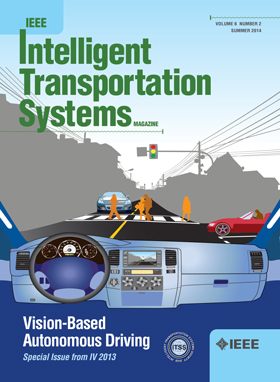CrackVisionX:一个精细的框架,用于有效的混凝土二元裂缝检测
IF 8.4
1区 工程技术
Q1 ENGINEERING, CIVIL
IEEE Transactions on Intelligent Transportation Systems
Pub Date : 2025-04-09
DOI:10.1109/TITS.2025.3546770
引用次数: 0
摘要
裂缝是混凝土结构中的关键缺陷,传统上是通过人工检测来识别的。然而,计算机视觉技术,特别是卷积神经网络(cnn),为自动检测提供了有前途的解决方案。在这一趋势的推动下,本研究提出了CrackVisionX,这是一种用于分类二元混凝土裂缝的最先进的深度学习框架。CrackVisionX集成了先进的CNN架构、ResNet50、MobileNet_v3_large、DenseNet121和EfficientNetB0,并进行了广泛的超参数调优。这种集成优化了裂纹检测精度,同时保持低模型复杂性和减少偏差,使其适合实时应用。此外,该框架引入了一个强大的数据增强策略,有效地解决了数据集失衡问题,增强了不同领域的模型泛化。此外,CrackVisionX对METU和SDNET2018数据集进行了全面的预处理,创建了六个领域:桥面、墙、路面、SDNET2018、METU和METU & SDNET2018。框架的性能经过全面评估,并以最先进的方法为基准,利用不同的指标来提高混凝土结构裂缝的检测。该框架的核心组件EfficientNetB0在桥面、墙体、路面、SDNET2018、METU和METU & SDNET2018的测试准确率分别高达99.71%、99.78%、99.55%、99.89%、99.98%和99.92%,表现出优异的性能。此外,我们使用被不同类型和强度的噪声污染的图像来评估CrackVisionX的鲁棒性,证明了它的可靠性和有效性。高精度和计算效率之间的平衡证实了该框架在实际部署中的潜力。实验结果强调了深度学习在建筑安全和结构健康监测方面的变革潜力。本文章由计算机程序翻译,如有差异,请以英文原文为准。
CrackVisionX: A Fine-Tuned Framework for Efficient Binary Concrete Crack Detection
Cracks are critical defects in concrete structures, traditionally identified through human inspection. However, computer vision techniques, especially convolutional neural networks (CNNs), offer promising solutions for automated detection. Driven by this trend, this study proposes CrackVisionX, a state-of-the-art deep learning framework for classifying binary concrete cracks. CrackVisionX lies in its integration of advanced CNN architectures, ResNet50, MobileNet_v3_large, DenseNet121, and EfficientNetB0, with extensive hyper-parameter tuning. This integration optimizes crack detection accuracy while maintaining low model complexity and reducing bias, making it suitable for real-time applications. Furthermore, the framework introduces a robust data augmentation strategy that effectively addresses dataset imbalances, enhancing model generalization across diverse domains. Additionally, CrackVisionX employs comprehensive preprocessing on the METU and SDNET2018 datasets to create six domains: Bridge Deck, Wall, Pavement, SDNET2018, METU, and METU & SDNET2018. The framework’s performance is thoroughly evaluated and benchmarked against state-of-the-art methods, utilizing diverse metrics to improve the detection of cracks in concrete structures. EfficientNetB0, a core component of the framework, demonstrated superior performance with exceptional test accuracies of up to 99.71%, 99.78%, 99.55%, 99.89%, 99.98%, and 99.92% for Bridge Deck, Wall, Pavement, SDNET2018, METU, and METU & SDNET2018, respectively. Moreover, we evaluated the robustness of CrackVisionX using images contaminated with different types and intensities of noise, demonstrating its reliability and effectiveness. This balance between high accuracy and computational efficiency confirms the framework’s potential for practical deployment. The experimental results emphasize the transformative potential of deep learning in construction safety and structural health monitoring.
求助全文
通过发布文献求助,成功后即可免费获取论文全文。
去求助
来源期刊

IEEE Transactions on Intelligent Transportation Systems
工程技术-工程:电子与电气
CiteScore
14.80
自引率
12.90%
发文量
1872
审稿时长
7.5 months
期刊介绍:
The theoretical, experimental and operational aspects of electrical and electronics engineering and information technologies as applied to Intelligent Transportation Systems (ITS). Intelligent Transportation Systems are defined as those systems utilizing synergistic technologies and systems engineering concepts to develop and improve transportation systems of all kinds. The scope of this interdisciplinary activity includes the promotion, consolidation and coordination of ITS technical activities among IEEE entities, and providing a focus for cooperative activities, both internally and externally.
 求助内容:
求助内容: 应助结果提醒方式:
应助结果提醒方式:


